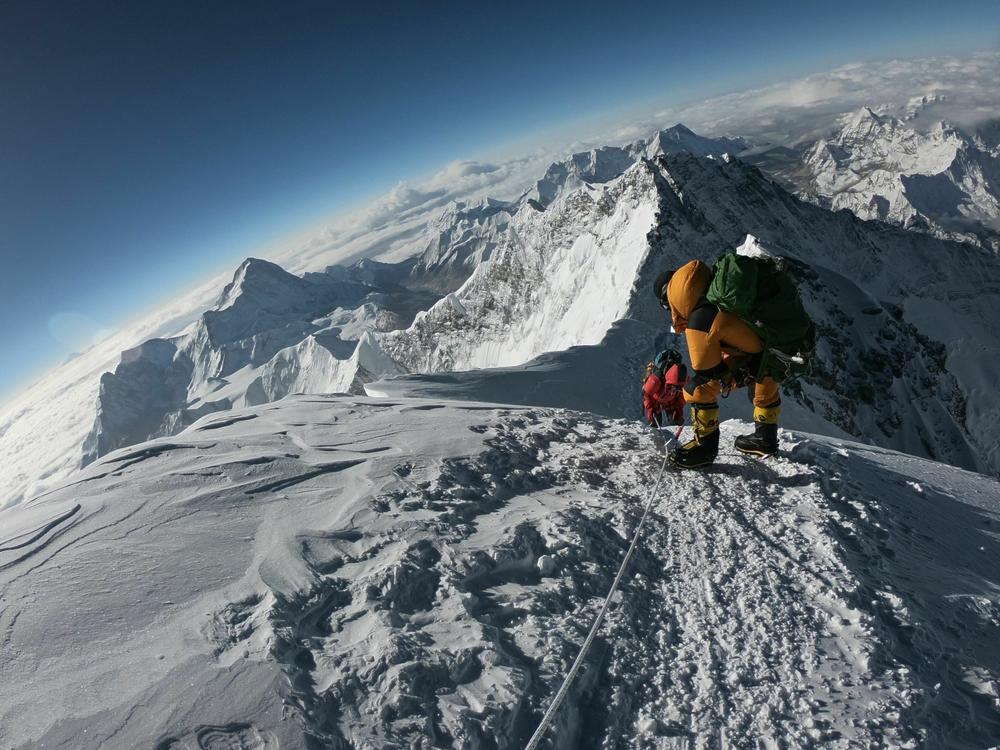Section Branding
Header Content
Opinion: A lifesaving moment at Mount Everest
Primary Content
I saw a video on Instagram this week of a mountain climber swaddled to the back of the Sherpa guide who helped rescue him.
Gelje Sherpa says he was guiding a client toward the summit of Everest last month when he noticed another climber hanging onto a rope, alone, in what's called Everest's "death zone." These are the highest reaches, where temperatures can drop below minus 30 degrees Celsius; where human cells begin to die without oxygen.
Gelje Sherpa halted the climb of his own client. Then he retrieved the freezing stranger, left hanging for his life, and hauled him for about six hours, to an area called the South Col, where another guide joined in the rescue.
"We wrapped the climber in a sleeping mat," Gelje Sherpa posted, "dragged him on the snow, or carried him in turns on our backs to camp three," which is still more than 7,000 meters high.
A helicopter met them to lift the stranded climber down to base camp. He was taken to a hospital, and has since returned home to Malaysia. His identity has not been released.
But you don't need to know who he is to consider him the luckiest man on the tallest mountain on earth.
Twelve people have died trying to climb Mount Everest this year. Another five are missing. Climbing Everest has of course always been dangerous, but a former Nepali government official told The Guardian newspaper, "This season the weather conditions were not favorable... Climate change is having a big impact in the mountains."
A recent survey found that just since the 1990s, the highest glacier on Mount Everest has lost 2,000 years of ice.
At the same time, the mountain has gotten more crowded. Nepal issued a record number of permits this season, and local guides complain that too many of those go to inexperienced climbers who can afford to pay tens of thousands of dollars for licenses, oxygen, equipment and skilled guides, but may lack the skills they need to climb the world's highest peak, and make it back down safely.
We don't know how the Malaysian climber found himself in peril. But two men who grew up in and know those mountains saw a stranger in danger, and risked their own lives to save him. As Gelje Sherpa posted, "Saving one life is more important than praying at the monastery."
Copyright 2023 NPR. To see more, visit https://www.npr.org.

